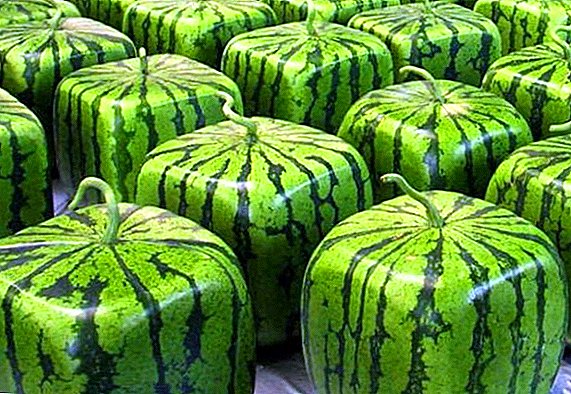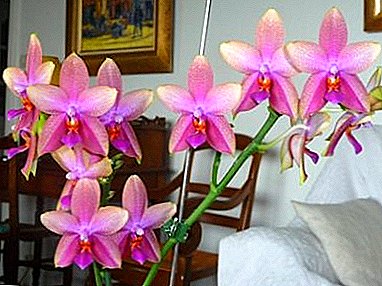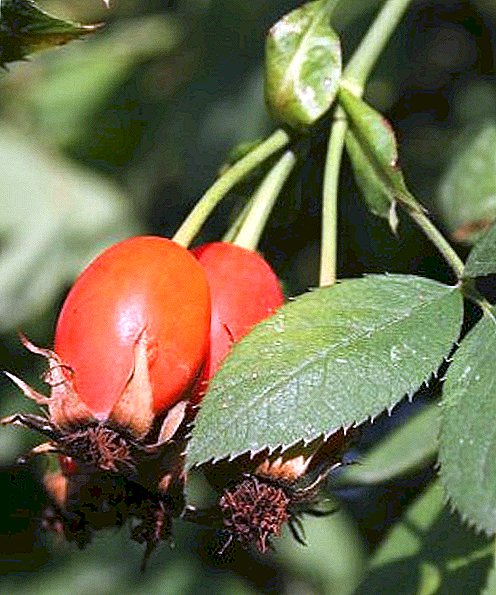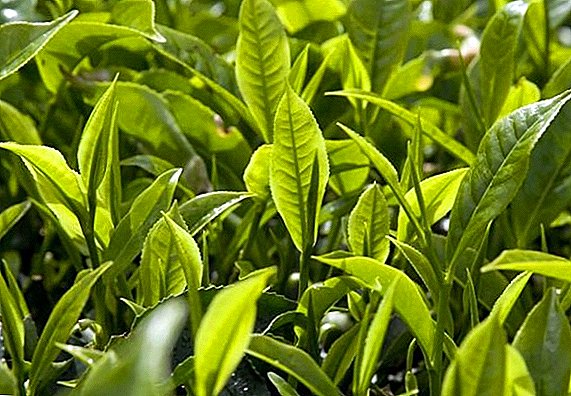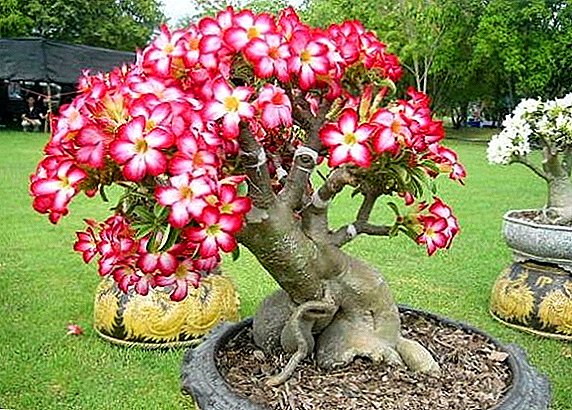 Let's get acquainted with a beautiful liana hailing from tropical America - Ipomoea. It can be a great decoration of the garden and local area. Liana does not require special care and grows quickly, delighting all summer and most of the autumn with abundant, bright gramophone flowers. We learn how to grow ipomoea purple, what are the features of flower care and how to use it in landscape design.
Let's get acquainted with a beautiful liana hailing from tropical America - Ipomoea. It can be a great decoration of the garden and local area. Liana does not require special care and grows quickly, delighting all summer and most of the autumn with abundant, bright gramophone flowers. We learn how to grow ipomoea purple, what are the features of flower care and how to use it in landscape design.
Botanical description
The genus Ipomoea is a typical representative of the Vynukovye family. It is often referred to as outdated names - farbitis or kvamoklit. There are many species of this plant, which are often grown for ornamental purposes. 
Ipomoea purpurea is a fast-growing liana, annual.
The annual ornamental plants can also be attributed such as Helipterum, Venidium, haretail, Bidens, lobularia, Nigella damask, lice.
The length of the shoots can reach 8 m. The pointed form of the leaves resembles a heart, the petioles are long.
The flowers reach a diameter of 7 cm, the funnel-shaped form of five petals fused together is similar to a gramophone tube. The central part of the flower is white; towards the edges, the color smoothly changes to pink and then to a deep purple hue.
Flowering begins in July and continues until the first frost. Seeds are formed in a small box of 2-4 pieces.
Did you know? Ipomoea flower lives only one day - it blooms early in the morning, and at lunch fade away from bright sunlight.

Distribution and habitat
Ipomoea species live in tropical and subtropical climates around the world. The highlands of southern Mexico, the tropical part of America, Guatemala, the Caribbean and the Bahamas are considered the birthplace of the Ipomoea purpurea.
It is quite unpretentious and undemanding to the soil, thermophilic, loves sunny places and grows very quickly. It is a cultural relative of common weed - convolvulus.
You will be interested to know about common types and varieties of Ipomoea, how to properly care for Ipomoea.
Use in landscape design
Due to its decorative qualities - abundant and long-term flowering, rapid growth, multiple leaves and unpretentiousness, ipomeyu are widely used for landscaping and creating flower arrangements.
In landscape design, it is used as a green curtain to create arches, pergolas. Allows you to quickly and effectively decorate the gazebo, terrace, vertical wall. In just a couple of weeks, he wraps around any supports of various shapes, creating a beautiful green carpet, hiding old fences and walls, mesh fences. 
Ipomea purpurea can be used with trellis to create a shaded corner in the garden, a cozy seating area. It perfectly shades the southern windows and decorates the house. It all depends on the designer's imagination.
Growing and caring for plants
The most popular ornamental variety is a variety of Ipomoea purpurea called "Paradise Stars", bred by breeders. Large flowers of different shades - from pink, purple, to purple - look very impressive. Growing it is not difficult, you only need to know some of the nuances.
Conditions of detention
Ipomeyu can be grown on open ground or on a balcony. The plant loves bright places, protected from the wind, does not tolerate drafts. It develops beautifully on the east side, and can also be planted on the west and south.
Important! Under low light Ipomoea increases green mass and blooms poorly, while the buds become less bright.

It is easiest to grow "Paradise stars" from seeds in open ground or in a pot. It is best to use separate pots, since young plants are very fragile and are easily damaged during transplantation.
It is necessary to germinate seeds at temperatures above 17 ° C. Friendly shoots appear within a half to two weeks.
In open ground, seeds are sown in spring (April) at an average daily temperature above 10 ° C.
Soil and fertilizer
Although ipomoea is an unpretentious plant, for good development and abundant flowering it is necessary to use nutritious and loose soil with low acidity (pH = 6) and rich in nitrogen. For cultivation in pots suitable universal soil mixed with sand and hardwood. 
Feed must be applied to the soil before planting. Nitrogen fertilizers are applied first, but in small quantities. Later you can fertilize with phosphorus and potassium, carefully scattering them around the plant and slightly deepening it.
Watering and moisture
Liana does not tolerate excess moisture and stagnant water; it can not be poured, otherwise the roots begin to rot, which leads to death. But drying out the soil also has a detrimental effect on the plant. The signal for watering can be slightly withered leaves.
During the period of intensive growth, when the ipomoea increases the green mass, it must be watered more often and more abundantly. With the beginning of flowering, the frequency of watering decreases. To avoid drying out of the soil, it is recommended to mulch it.
In a very hot and dry period, you can carefully spray the liana with water, trying not to fall on the delicate buds. 
High humidity and low air temperature in combination with excessive watering can cause plant disease.
Relation to temperature
Ipomoea refers to heat-loving plants. It does not tolerate frosts. Outside the tropical climate, it cannot winter, most of its species are annuals.
Important! If at night the temperature is below 5°C, tropical liana may die.
In the fall, with the onset of the first frost, seeds are collected and the plant is removed from the site. If desired, you can bring it for wintering in a room with a temperature not lower than 5 ° C and used in the spring for grafting.
Perennial species Ipomoea can grow only in warm countries. 
Reproduction and planting
The easiest and easiest way to reproduce Ipomoea purpurea - seeds. They are collected in the autumn, dried boxes, and stored until spring in a cool, dry, dark place in paper bags. Seeds have excellent germination and can be stored for three years.
Usually seeds are grown for seedlings. In the spring, they are prepared for planting, soaking in water at room temperature for a day. When the seeds swell, they can be sown in separate small pots for several pieces, to a depth of 2-3 cm. The soil should be wet.
For early germination, you can cover the pots with film or glass, keeping the temperature at 18 ° C. The film can be removed daily for airing.
After 14 days, shoots will appear. When the fourth leaf appears, seedlings can be swooped down and repotted. When the height of the seedlings is 15 cm, it is necessary to put small supports so that they do not intertwine with each other. 
In open ground, seedlings can be planted at a distance of 25 cm from each other when there is no frost and the night temperature is above 5 ° C.
The second method is planting seeds in open ground. Seeds need to be scarified, that is, damage the outer shell, soaking in warm water for 24 hours. The landing is carried out in a well warmed and fed soil, with the air temperature during the daytime above 16 ° C.
Seeds are sown to a depth of 2-3 cm, 2-3 pieces at a distance of 25 cm between the holes, and watered with a watering can.
For branching, you can pin the tip of the shoot when its height is about 15 cm. 
Did you know? One of the species of this liana, ipomoea lobed, came to Japan from China approximately in the VIII century AD and a thousand years later gained great popularity as an ornamental plant. The Japanese nicknamed the beautiful tender flower, which blooms only in the morning, "asagao" - "morning face".
Possible difficulties in growing
Grow ipomoea is not difficult, it is growing rapidly and quite unpretentious. The main thing - the correct watering and loosening the soil. The main difficulties may arise under adverse weather conditions. A rainy and cold summer may cause the buds to rot, and the heat may cause the leaves to dry.
It is necessary to prepare the supports in time, so that the ipomoea can grow normally and not intertwine with the neighboring plants on the site.
When growing on a balcony, it is important to choose the right pot: it must be deep enough for the normal development of the root system. However, too large a pot can cause an increase in green mass and poor flowering. 
Pests, diseases and prevention
Ipomoea may suffer from viruses - such diseases are not treated. White swelling, a disease that affects plants grown in greenhouses, can occur from excess moisture and cold air. It is manifested by the appearance of cones on the leaves and leads to the death of the Ipomoea.
From the excess of moisture in the Ipomoea may appear fungus or rot.
- The fungus is manifested noticeable white spots on the leaves and stems. It helps to remove the infected parts and the treatment with a fungicide - for example, Dr. Foley.
To fungicidal drugs include such as "Skor", "Switch", "Thanos", "DNOK", "Fundazol", "Signum", "Oksihom", "Alett".
- It happens root or stem rot, which is impossible to fight - you have to pull out and destroy the diseased plant.
Ipomoea's main pest enemies are the aphid and spider mite.
- Aphid sucks the juice from the plant, as a result of the leaves are covered with yellow spots.
- Signs of mite are small dots on the leaves and thin cobwebs.
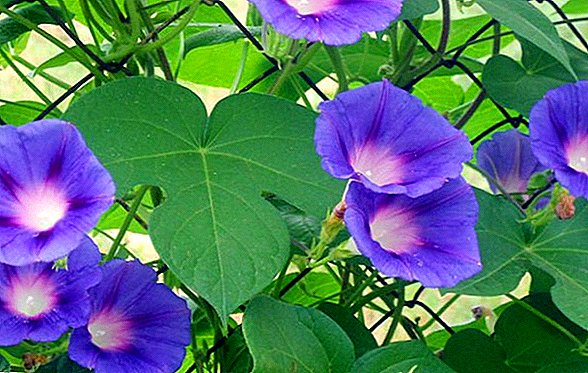
Spraying the plant with cold water for several days will help you with a tick, and any a suitable insecticide from aphids; for example, Aktara, Fitoverm.
Important! A folk remedy can be used for spraying against aphids - a solution of water and liquid soap (proportion: 1 teaspoon of soap per 1 cup of water).
Disease prevention is proper watering and care.
So, we learned how to grow a beautiful ipomeyu at home, how to properly care for the plant. Growing it is not difficult, and the gardener's works will give a remarkable result - bright flowers and green fringe. Guest from the tropics will decorate any corner of your garden or balcony, and will long please the eye.


